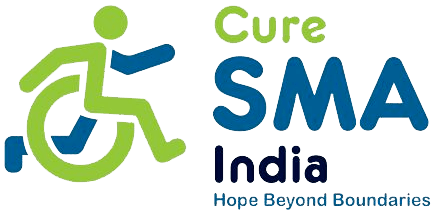Consensus Statement for Standard of Care in Spinal Muscular Atrophy (SMA) was developed by a group of experts in the care of people with SMA. The goal of the consensus statement is to serve as a resource for healthcare professionals and to provide recommendations for the most current treatments.
It is important to understand that these are suggestions — the consensus recommendations are for your general consideration and should not be considered absolute requirements for care.
It is important to know that there are things you can do to keep your child with SMA comfortable and safe and to help him or her learn and grow to fullest capacity. SMA experts recommend five key areas for discussion with your doctors/therapists:
- Confirming the diagnosis of SMA
- Managing breathing
- Managing eating and nutrition
- Managing movement and daily activities
- Preparing for illness.
Confirming the diagnosis of SMA
- If SMA is suspected, ask for a blood test to confirm or rule out the disease.
- If SMA is confirmed, talk with your doctor or a genetic counselor about what this means for your family.
- Learn more about the specific medical problems associated with SMA and work with your medical team to develop a care plan personalized for you and your child.
The setting of a multidisciplinary team where a child with SMA will be looked after by a pediatrician, neurologist, orthopedician, pulmonologist, dietician, a physiotherapist, and where needed a child psychologist and a genetic counsellor is the need of the day.
The goal of good care of SMA is to prevent hospitalizations and optimize OPD based care.
Managing Breathing Problems
Respiratory or breathing problems are the number one cause of illness for people affected by SMA and are the most common cause of death among children with Type I and II disease. Muscle weakness can make your child more susceptible to respiratory infections. Respiratory care of patients with SMA is essential to their survival and quality of life.
- Discussions with a pulmonologist familiar with SMA management issues should take place as soon as possible after diagnosis. The doctor will evaluate your child’s breathing and ability to cough effectively and make recommendations for helping to keep your child’s airway clear.
- Depending on disease severity, tools that may help include manual or mechanical cough assist devices and non-invasive ventilatory support such as bi-level positive airway pressure devices (BiPAP).
- Routine immunizations and flu shots are also recommended.
- Work with the medical team to develop a care plan to prevent problems.
- Work with the medical team to develop a care plan for use during acute respiratory illness such as a cold or flu, or in case your child develops more severe problems requiring hospitalization.
Managing Feeding Problems
People with SMA can suffer from under- or over-nourishment and both can affect your child’s quality of life. Your medical team should regularly monitor your child’s growth and work with you to develop an optimal nutritional and feeding plan personalized for your child.
- Monitor your child’s growth on a growth chart and work with your medical team to develop a personalized feeding plan.
- If your child experiences trouble swallowing, has gastric reflux or is bothered by constipation, talk with your team about developing workable solutions.
- Monitor for eating or digestive problems and develop strategies for preventing aspiration pneumonia.
Managing Movement and Daily Activities
Muscle weakness, the most obvious symptom of SMA, varies from person to person, depending on disease severity. Care plans for managing muscle weakness of the arms, legs, trunk and neck are important for helping your child achieve his or her highest level of function and independence.
- Work to develop a physical therapy plan with Physical therapists, occupational therapists, speech therapists and/or rehabilitation specialists to help your child achieve their highest personal level of function and independence.
- Consider use of assistive devices, tools and exercise to support breathing, eating, work and play.
- Consider use of assistive devices to help slow or prevent spinal curvature (Scoliosis).
- Regular evaluation by orthopedician.
Preparing for Illness
Caring for your children is challenging enough in normal circumstances; the complications of SMA can add another layer of complexity to family life. In discussing care plans for your child, you and your medical team are likely to talk about daily or chronic care, prevention and what to do in case of medical emergencies.
- Planning is the single most important thing you can do to prevent a medical emergency. Talk with the medical team about care options and their consequences for your child and your family.
- Share your plans and management goals with all the healthcare professionals involved in caring for your child.
- Maintain a notebook or folder of current treatment plans and your decisions about critical care, to help you and healthcare professionals during a medical emergency.
SMA experts agree: Care for children with SMA is often best accomplished with the help of many specialists and primary care providers. Parents are key members of this team and are encouraged to participate as much as possible. The recommendations made in this Family Guide are based on the guidelines developed for doctors and healthcare specialists, but they are only suggestions. You and your medical team are the best people to decide what is appropriate for your child with SMA. Please contact your doctor with any questions you might have about the consensus guidelines or care for your child.
